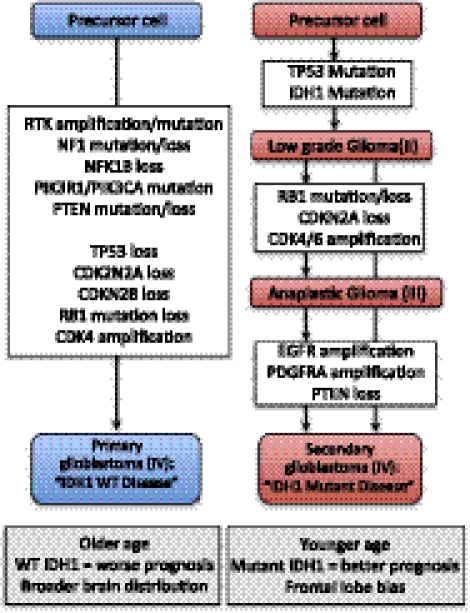Figure 1.
Genomic alterations underlying gliomagenesis. Both primary and secondary glioblastomas arise from precursor cells that may be distinct. Primary glioblastomas arise de novo and exhibit p53 and Rb pathway dysfunction as well as RTK/Ras/PI3K signaling dysregulation, leading to tumors that arise in older patients with a worse prognosis, likely owing to the predominant wild-type IDH1 genotype. In contrast, secondary glioblastomas are preceded by lower-grade II lesions, which progress either through grade III lesions or directly to glioblastoma. These tumors occur in younger patients and are dominated by a mutant IDH1 genotype that confers a better prognosis and is associated with a more restricted frontal lobe location.

